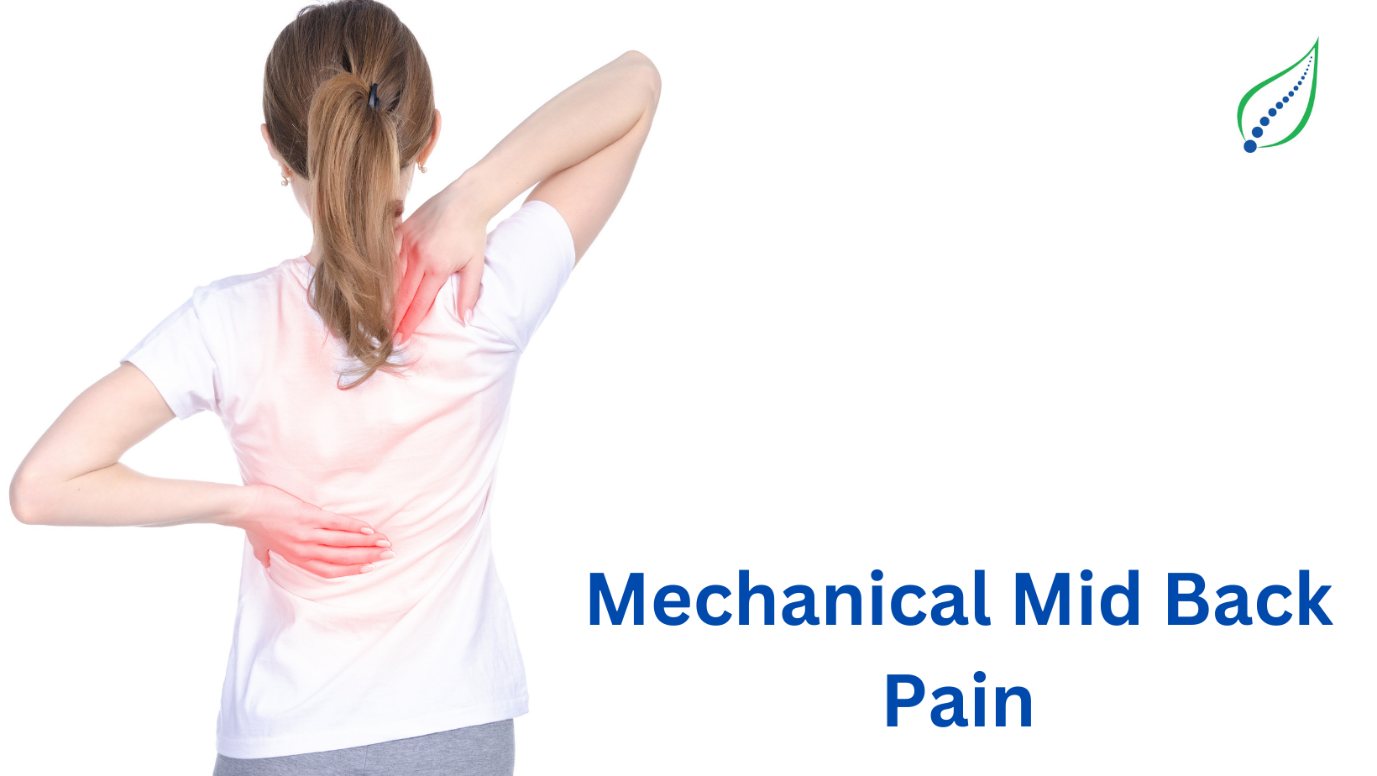Mechanical Mid Back Pain
Mechanical mid back pain occurs when a structure in back, like an intervertebral disc bone or joints, are stressed or deformed in a way to cause pain. It can be localized to small area on the spine or it can spread more to either one or both sides of the back. That type of back pain is contrasting to inflammatory back pain which covers spinal conditions such as ankylosing spondylitis. The movable parts of vertebral column include muscles, tendons, ligaments, vertebral bodies, facet joints, intervertebral discs, as well as surrounding soft tissues. The motion of these mobile parts triggers mechanical pain.
PATHOPHYSIOLOGY:
- Mid back pain can occur of trauma or sudden injury, or through strain or poor posture over time.
- The most common cause of mid back pain appears to originate from muscular irritation or other soft tissue problems.
- These can arise from lack of strength, poor posture, prolonged sitting at a computer, using a backpack, overuse injuries or trauma.
- Asymptomatic thoracic disc herniation.
SYMPTOMS:
- Pain that persists for a maximum of 10-14 days
- Stiffness in the mid back area, restricting range of motion
- Muscle spasms either with activity or at rest
- Inability to maintain normal posture due to stiffness and/or pain
INVESTIGATION:
If symptoms are persistent, the following tests may be ordered by your doctor. It is important to note about of diagnosis.
XRAY: It is spine are obtained to search for other potential causes of pain, spinal malalignment, tumours, infections, fractures, etc.
MRI: Show the spinal cord, nerve roots and surrounding areas, as well as enlargement, degeneration and tumours.
CT SCAN: Shows bony detail better than any other imaging test and can still show soft tissue and nerves.
EMG/NCV: Neurophysiologic testing of nerves to help localize site of compression or other neural pathology.
NON-SURGICAL TREATMENT:
Strains, sprains & structural neural compression from disc herniation can be treated with less activity & bed rest for a short period of time, usually from one to three days.
Medical treatment is commonly used nonsteroidal anti-inflammatory drugs (NSAIDS).
Muscle relaxants & narcotic medication can be substituted for cases of more severe pain.
PHYSICAL THERAPY: Includes pelvic traction, gentle massage, ice and heat therapy, ultrasound, electrical muscle stimulation and stretching exercises.
Stretch: Lie on your back and cross one leg over the other knee. Pull the knee of leg that is down towards the chest to feel a stretch in the opposite buttock. Hold for 30 seconds, 2 reps
Cat & Cow Spinal Mobility: In quadripode position arch your spine up & arch your spine up & down.
Knee to Chest Stretch: supine lying and bend your knee then pull towards the chest. 30 sec hold 2 times.
Postural and lifestyle changes play important role in mechanical mid back pain.

_1747226427_1751827070.png)
_1744793045_1751827442.png)
_1743751136_1751830603.png)
